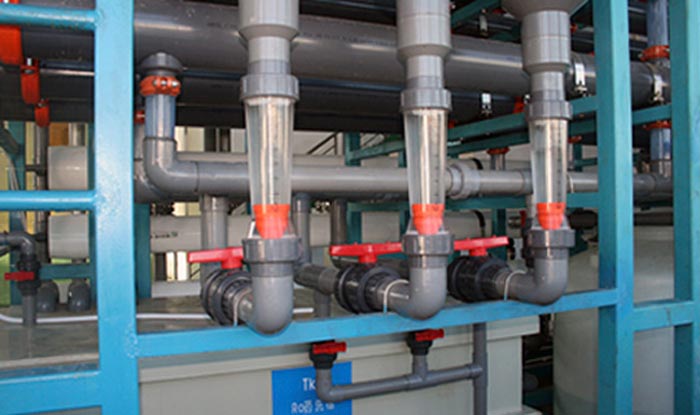Photovoltaic (PV) Wastewater Recycling

A PV company was planning to construct a new solar mirror manufacturing facility in Arizona. The production will generate 50 gallons per minutes (GPM) of wastewater containing heavy metals, ammonia, tartrate, TSS, and COD as the major contaminants. Current water shortage at the selected plant location caused by continuous drought and rapid population growth presented a great challenge to the water intensive production processes. The company decided to move forward and built the new plant with water recycling capability in the selected location after all other alternatives were thoroughly investigated.
Both Reverse Osmosis (RO) and Ion Exchange (IX) water recycling technologies were evaluated in the initial feasibility study. Based on the chemical characteristic of the wastewater, the IX alternative was disqualified. RO membranes are well suited for removal of dissolved solids, but could be adversely affected or fouled by suspended solids, colloidal material or scale. Appropriate pretreatment must be provided to achieve satisfactory performance of RO membranes.
Two RO pre-treatment methods were investigated for their technological and economic viabilities for the solar mirror wastewater. They are the hollow fiber ultra-filtration (UF) and tubular micro-filtration (MF). After weighing out the evaluation data as presented in the article, the company selected the tubular MF pre-treatment methodology based on its more simple operation with less operating units, lower life-cycle cost and less floor space requirement.
Through a series of bench-scale and pilot testing, a chelate-breaking chemistry using ferrous iron was developed for precipitation of the metal complexes. A two-stage reaction process was implemented. The chemically pre-treated wastewater is processed through the tubular membrane modules designed for separation of the precipitates from water. The MF filtrate is further treated by a two-pass reverse osmosis for salt removal. The RO process retains the high molecular weight compounds and allows a small percentage of very low molecular weight ions to pass through the membrane. From the RO unit, permeate is collected and recycled to the selected solar mirror production process, while the brine (reject) is transferred to an onsite evaporation pond for disposal.
Membrane based technology (MF/RO) has proven as a technically and economically viable approach for recycling of solar mirror wastewater in the PV industry. Chemical pre-treatment that transforms wastewater into membrane-compatible form provides the needed flexibility to cope with the complicated wastewater. The success of this installation further supports that in the midst of today's water shortage crisis, industries are beginning to recognize the value of becoming more independent by recycling of their own resource (water) for their own production processes.

